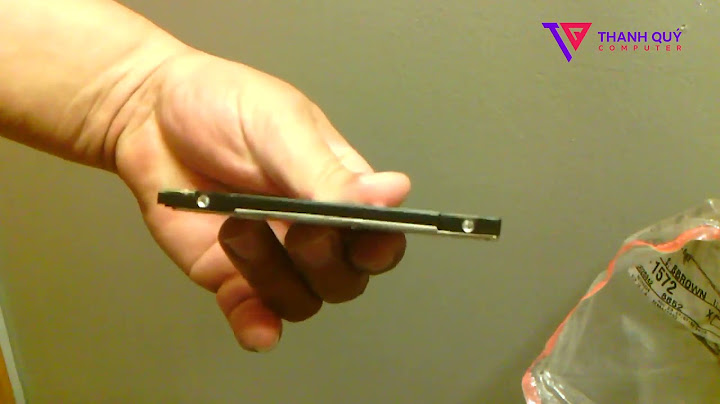Cary Audio This product is no longer available. Current stock: 0 Product: Cary Audio CD 303/300 Tube CD / HDCD Player (No Remote) Product SKU: 20031 Serial Number: 0430330562 Voltage: 100-120V Cosmetic Description: 7/10 Very good cosmetic condition with some minor visible cosmetic wear including some fading on the anodizing on the sides of the faceplate. The top surface has a few extremely faint scuffs as well. This item does show a few blemishes but is attractive overall and has been well cared for. What is Included: CD Player, 2 La Radiotechnique 12AU7WA tubes, Power cable, Factory packaging (remote not included) Functional Notes: Operational condition of this item is excellent, fully tested and no issues found. Age: Circa 2005 # of Owners: 1 Tobacco Exposure: No Service History: None MSRP: $4000 Other Notes: "Also, like everything else I've seen from Cary Audio Design, the CD303/300 is solidly built and fairly priced. In terms of physical construction, ultra-high-quality parts, and brand-new, original technology, there's a lot going on in the Cary's 38-lb chassis. At its price of $4000, the Cary CD303/300 should disappoint no one and tickle many: an easy recommendation." - Stereophile Product Specifications Manual Reviews: Stereophile Positive Feedback Shipping: Cost to ship this item within the contiguous United States is a flat rate of $55- including packaging and insurance. For all other locations including Hawaii, Puerto Rico and Alaska, please request a quote prior to purchase. Items with factory packaging will be double boxed. When factory packaging not available re-usable shipping box with custom injected-foam mold will be used. (for all items over 10 lbs). Note that all items valued over $500 will require a signature upon delivery. Sound "The CD 303/300 sounded a variety of ways depending on which output section and sampling rate were used." "The tube output section exhibited good detail and tonal color, and it painted a nice, open soundstage. The solid-state output section’s high and low frequencies were quite extended and detailed." "Through the midrange, both output sections sounded just a bit forward." Features A fully balanced CD player with switchable tubed and solid-state output sections, switchable sample rate, and built-in analog volume control. "Cary Audio uses its Resolution Enhancement DSP circuitry to provide the choice of upsampling rate after the circuitry first expands the CD's 16 bits to 24." Use "The CD 303/300 is packed with audiophile-approved goodies that seem well thought out not only to improve sound quality but also to enhance using the player. If you like futzing with your audio gear, you'll find a lot to like about the CD 303/300." Value "The Cary Audio CD 303/300 is certainly worth your audition time, but you shouldn't ignore other similarly priced CD players, especially, as I discovered, the one that may be sitting in your equipment rack right now." http://studio-hifi.com/images/CD303-300%20CD%20player.pdf https://www.google.com.au/url?sa=t&rct=j&q=&esrc=s&source=web&cd=3&cad=rja&uact=8&ved=0ahUKEwj5xIjpkPXNAhXMkpQKHZKcCp4QFggoMAI&url=http%3A%2F%2Fwww.positive-feedback.com%2FIssue23%2Fcary_303.htm&usg=AFQjCNH0_L9n2VZyIqA_EqtHqNbKA18VTw&sig2=oWP5m8j5aCNlUNgg-0MaVA ust before the start of this year I reviewed the Cary CD-303 CD player, only to discover a couple of weeks later that a new model, the 303/200 was on its way out. Since I had found the original 303 to be an excellent player, even going so far as to state that it set the bend in the price/benefit curve, I was intrigued to hear how the new player would fair in comparison to the old. After speaking with Dennis Had, president of Cary Audio Design, at CES 2002, we both agreed that this was a good idea. So that we can start from the same reference point, if you did not read the original CD-303 review please follow this link and at least read the "Outro" section. As you can see, the CD-303/200 has a tough task, namely, being a worthy successor to a superb product. Back in the '70s when Francis Ford Coppala faced a similar situation we got The Godfather II. On the other hand, around the same time Ford Motor Company offered their follow-up to the Mustang and we got the Mustang II. Let us find out to which side of that sizeable quality divide Had and Co. fall.
The CD-303/200 is almost a clone of the original CD-303 in style and size, with most of the model changes happening inside the box. Perhaps the most obvious and significant change is the one used in the name to differentiate the two players. Where the original CD-303 employed a dual 24/96 Burr-Brown PCM1704u chipset and sent the resulting datastream to a Pacific Microsonics PMD-100 HDCD filter, the CD-303/200 uses the full 24-bit compatible PMD-200 HDCD filter. The digital section is also tweaked to take full advantage of the 24-bit/96kHz chipset and filters as the 303/200 offers upsampling as well as standard 16-bit/44kHz CD playback. On the back of the player is another significant change. The old 303 (let's call it the 100 and the new model the 200 for convenience sake) had balanced and single-ended outputs, as does the 200. The 100 also had coax, optical and AES/EBU digital outputs, as does the 200. But the 200 adds a coax digital input that accepts signals up to and including a full 24/96 bandwidth. This allows the 200 to act as a DAC for sources as varied as a computer sound card, secondary transport, digital broadcast TV or two-channel DVD. The other changes are fairly routine. The transport is still the Philips CDM-12, but the 200 uses a custom made aluminum tray. The fascia on the 200 uses silver buttons in place of the black buttons on the 100 (several audio companions have complained about this change, but I like it, for all that's worth) and adds a button for upsampling and one for digital source selection. The remote has also changed, from the original plastic wand that the 100 used to a heavy chrome remote that has backlit buttons. I like the buttons and the heft of the new remote, but the response to the chrome-plating at the Warnke Diaper and Music Lodge has been a universal thumbs down. Oh well, like the silver buttons, it's only a cosmetic thing. Finally, the 200 shows a wonderful attention to detail, both internally and externally. The board is cleanly laid out and impeccably built while the casework is solid but not ostentatious. Sounds Brand-new and just out of the box the 200 was slightly closed down up top and harmonically thin as compared to the well-used 100. But even with those issues, the 200 immediately showed the potential to expand on the original. First, even in the raw state, the 200 laid out a stage like Andrew Lloyd Webber. Right to left was a touch more expansive than with the 100 while the rear of the stage was firmer, with better control and precision. The stage also projected into the room with greater authority. These were strengths that remained constant as the 200 broke-in. And as the 200 broke-in it showed itself to be a steady source of other incremental but significant improvements. The bottom end which had been an asset of the 100, was very slightly more extended, but more importantly, was cleaner, better defined and more harmonically detailed. Listening to the opening track, Ganapati, from the Susheela Raman album Salt Rain [Narada 50955-2], the 200 brought more of the texture in Hilaire Penda's bass to the fore in a subtle but musically rewarding manner. The increased drive and detail accented the rhythm of the piece and gave Raman's otherworldly vocals a tighter and more focused foundation. After about 200 hours the top end on the Cary player opened up and, once again, the difference was for the better. Where the original 100 had a detailed but not bright treble, it nonetheless carried a slight touch of grain. The 200 rendered all the detail of the 100 with the same extended but not overly hot treble but did so while eliminating all but the smallest vestiges of the grain of the older model. Please keep in mind that the grain carried by 100 was slight and was far from a significant problem, so the gain is small in absolute terms, but when you begin to play close to the margins of what is possible small gains are easily noticed � and eagerly accepted. In my review of the 100, I noted that its tonal balance was very evenhanded, almost to a fault. The 200 carries on that same tradition. It is not the CD player to buy if you need to warm up that solid-state system, but in equal measure it is not the player to add a bit of extra leanness to a tonally florid tube setup. In other words, it works as a source should, delivering a neutral but truthful signal to the pre-amplifier. As I ran the output from the 200 through a bunch of amplifiers, speakers and cables I came to appreciate this skill. The 200 never dressed up the signal to the extent that I was unable to recognize what sound was source and what sound came from elsewhere, but equally important, it also never shorted me on tonal beauty and musical enjoyment. If you are getting the idea that the 200 is more Godfather II than Mustang II, you are right. In every way this player takes everything that the 100 did right and extends it slightly, while directly addressing the few things that the100 missed - musical things like treble grain and audiogeek things like staging, but also usability factors such as upsampling and the ability to hook-up an external digital source. Speaking of which, I found upsampling to be a wonderful tool. While just short of universal, on about 85% of the disks I listened to it made subtle but across the board improvements. Richer textures but also greater detail. Tighter rhythm, very slightly improved dynamics, but more bloom and air as well. I've read some folks who claim that upsampling has near the same effect as remastering a recording for SACD playback, and while I'm not one of those people, I certainly hear a definite and worthwhile improvement with upsampling. As for the 15 or so percent of the time I don't hear an improvement, two out of three times I heard near to no change at all and only about 5% of the time did I prefer standard 16-bit/44kHz. Since upsampling is selectable by remote, switching from one mode to the other is an effortless event and hence carries no cost to try. I also found excellent use for the digital input. If, like me, you enjoy ambient music, then you also know how difficult it is to find a store with a decent catalog, much less a local radio station. This being the case I have turned to the internet, especially Difficult Listening and Ambient Zone, the ambient section at MP3.com and starsend.org. Since the high-end laptop market has yet to materialize, I've had to suffer with the two-bit DAC (no pun intended) and headphone output on my Gateway. But no longer. Unless you've experienced it, you'd be surprised how good streaming audio can sound when it's decoded by a quality DAC and played back on your main system. The 200 sounds great with high quality sources as well. I put the Cary in my two-channel video setup and fed it signal from a second transport as well feeding it two-channel 24-bit/96kHz DVD. In both cases what I heard was utterly fantastic. Face-Saving Time Lest you think I am surrendering my critics ears, the 200 is not perfect. My long-term reference Dodson DA-217 mk. II DAC still offers a touch more authority and bass slam. And, most especially when comparing the Dodson to the 200 when the latter is decoding an external source, the Dodson renders a soundfield that, by the smallest of margins, is more stable and more expansive. On the other hand, the 200 reveals more of the harmonic nature of music, while giving up none of the detail that the Dodson so beautifully extracts. This gives the two sources very even qualitative structures but with slightly different characters. The ideal digital source would combine both these characters, but please keep in mind that both are also very close to the edge of what any digital source I know of can do. Time To Go So where does this leave us? Well, it leaves me with a new reference. Two in fact. First, that bend in the price performance curve has had the performance pushed upward while maintaining the price. The 100 was a bargain at $3,000, and that makes the 200 a dead-lock steal at the same price. Second, the 100, as good as it was/is, could not quite reach the performance of my Dodson DA-217 mk.II DAC, which at $4000 for a dedicated DAC, is no surprise. The Dodson had control and authority that the 100 just missed, but not so the 200. While not a clone of the Dodson sound, the 200 offers every bit of the quality that the Dodson does, and with a free transport. Frankly, I am surprised at how well the 200 performs. To me, it seems like the smart place to land while the high-bit rate format wars play out, or at least until an affordable universal player arrives. In standard 16-bit/44kHz format it is a slight but noticeable improvement over the 100, while in upsampling mode it makes almost every CD in my collection sound better still. Add in the ability to add an external digital source, and the 200 comes out as one of the true bargains in the high-end. |





















